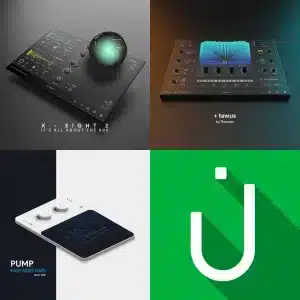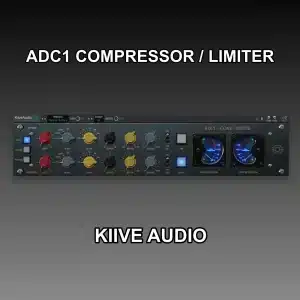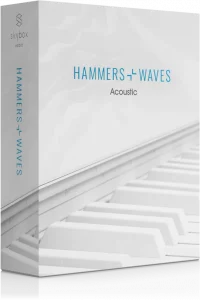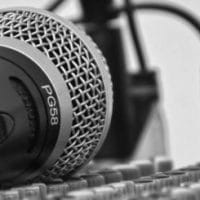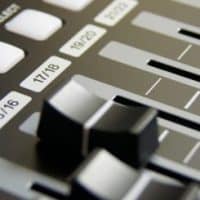Paris Sampling Developer Diary #2: The Paris Approach BACKGROUND When I decided to launch a new sampling company I knew that I wanted to do things differently than my previous attempts. My first company “Private Labs” was fairly successful, but ultimately suffered from lack of long term vision and ended…

Paris Sampling Developer Diary #1: Introducing Argo Studios, Yerevan
YEREVAN, ARMENIA
Many Westerners may mostly associate Armenia with being the country of origin of System of A Down, Cher and the Kardashians, but the country has quite a rich and ancient history dating back to around 600 BC. Armenia is located in the South Caucasus region of Eurasia. It is bordered by Turkey to the west, Georgia to the north, the de facto independent Republic of Artsakh and Azerbaijan to the east, and Iran and Azerbaijan’s exclave of Nakhchivan to the south.

Yerevan is the capital and largest city of Armenia as well as one of the world’s oldest continuously inhabited cities. Situated along the Hrazdan River, Yerevan is the administrative, cultural, and industrial center of the country and has been the capital since 1918. It also happens to be one of my favorite cities, featuring amazing international food, wine and legendary cognac. Best of all, the city is just a 6 hour drive away from my current home of Tbilisi, Georgia.
BACKGROUND
As I began to travel to Yerevan, Armenia more often for various sampling projects I started to hear stories from musician friends about a “big recording studio” that was suitable for recording orchestra. Eventually, my work in Yerevan led me to meet with a couple of talented engineers who told me they were familiar with the studio and were kind enough to arrange a visit. I did my best to temper my expectations. However as soon as we arrived and I set foot in the studio, I immediately fell in love.

SOVIET BEGINNINGS
“The Melodia Company” was founded in 1964 as a state-owned company for the production, storage and distribution of sound recordings. Being the successor of the All-Union Recording Studio “Melodiya” it was the only record company in the country till the collapse of the Soviet Union. The Melodia recording studios were situated in Moscow, Leningrad, Riga, Tallinn, Vilnius and Tbilisi and Yerevan. Sadly, many of the original Melodia studios were destroyed or converted after the fall of the Soviet Union. While living in Tbilisi, Georgia I had heard tales of the great Melodia studios by some who were there for recordings during the heyday of the Soviet film industry. While Tbilisi’s own Georgian Film Studio, which I had the pleasure of working in was impressive in its own right, Melodia it seemed would remain a legend.
UPGRADING THE STUDIO
Overall the studio is in surprisingly good condition despite being in operation on and off for more than 40 years. The studio features a stunning live room of over 300 square meters, more than capable of comfortably seating a full symphony orchestra and choir. No major renovations will be required for the live room apart from building new baffles and risers for the conductor, wind and brass sections. There is also a separate 20 square meter isolation booth suitable for tracking drums, percussion or a rhythm section.
Our first order of business was running new cables from the control room to the live room, replacing the old, stage 24 channel stage snake with enough inputs for up to 48 channels in and more outputs for headphones. On that note the studio also purchased 70 pairs of AKG closed back headphones which will come in handy for large scale tracking sessions. Other key purchases, while not necessarily sexy (but very necessary) included new music stands and music stand lights.

The control room, which from the look of it hadn’t seen much in the way of upgrades since the early 2000s was in need of some serious work. Luckily, there were a few decent pieces to start with, including a pair of Neve Portico preamps, an RME octamic, an 8 channel Focusrite and an ISA preamp. My engineer colleagues installed their 24 channel Neve AWS console and replaced the RME fireface 400 with top of the range SSL converters. Combined with the original pres owned by the studio, we now have 40+ inputs available which will certainly come in handy for our projects.

The very long in the tooth Windows PC, that oddly enough was running Magix Sequoia (not a bad program, just an unlikely one to find at a scoring stage) was replaced by a fully loaded “cheese grater” Mac Pro loaded with Pro Tools 10 HD and Logic Pro.
MICS
Argo’s microphone cabinet consists of a collection of many of the trusty, high-end microphones you’d expect to find at any scoring stage. Neumanns TLM 149, U87, U89, KM184, AKG 414, 451, Beyerdynamics and many others. We also managed to find several varieties of LOMO microphones. If you are not familiar, Lomo was (among other things) a Soviet audio manufacturer. Many of their microphones were modeled after popular microphones available in the West such as Neumanns. I have had extensive, first hand experience with their U87s clones, a rare 1980s prototype microphone that I had the pleasure of using on dozens of recordings over the years. The studio’s collection includes vintage solid state, tube and ribbon Lomos.

If you can’t already tell, I am extremely excited to be working with Argo studios and looking forward to our collaboration in bringing what I believe will be awe-inspiring sample libraries, not to mention soundtracks to live in the years to come. Stay tuned!


